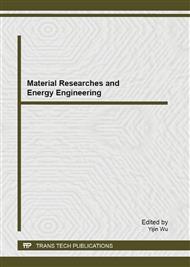p.634
p.640
p.646
p.653
p.658
p.664
p.673
p.681
p.688
High Efficiency MPPT Using Piecewise Linear Approximation and Temperature Compensation
Abstract:
We propose a method of piecewise linear approximation with temperature compensated to model the characteristics of the maximum power points locus of photovoltaic panel under different irradiance levels and temperatures. This method can fast tracking photovoltaic panel maximum power point, and can also overcome the problem of the temperature drift. The simulation and experiment results indicate that, the maximum power point tracking efficiency of the proposed method is up to 90% ~ 99.9% under diffident irradiance.
Info:
Periodical:
Pages:
658-663
Citation:
Online since:
September 2013
Authors:
Price:
Сopyright:
© 2013 Trans Tech Publications Ltd. All Rights Reserved
Share:
Citation:


